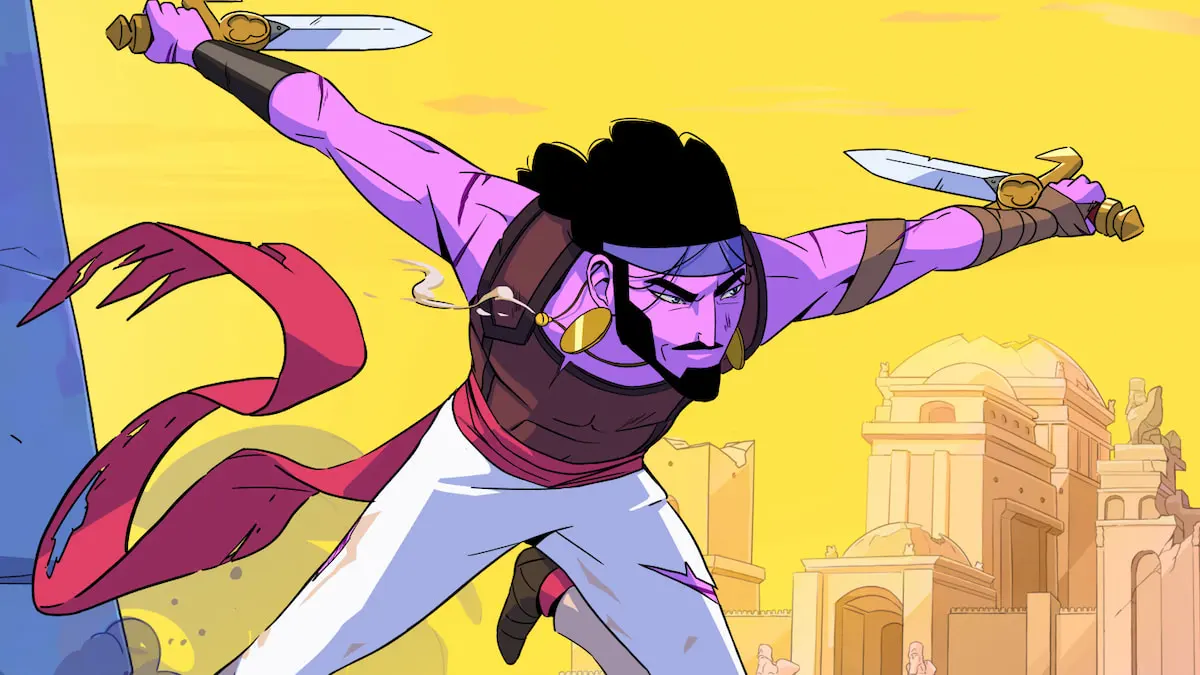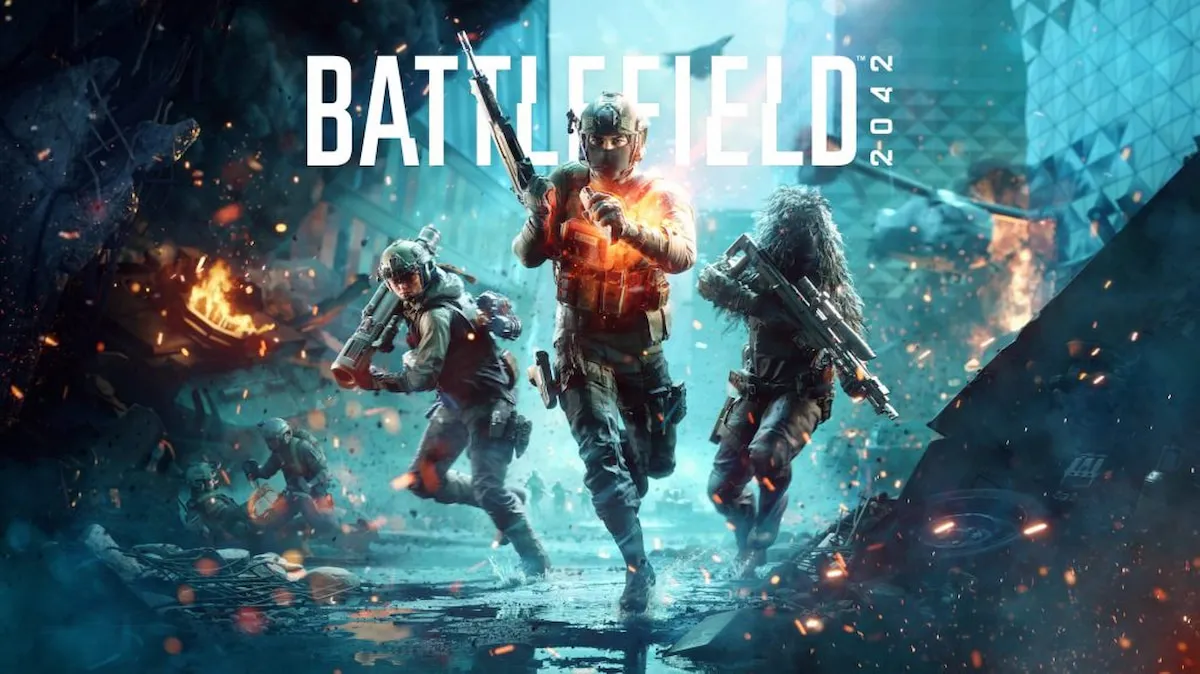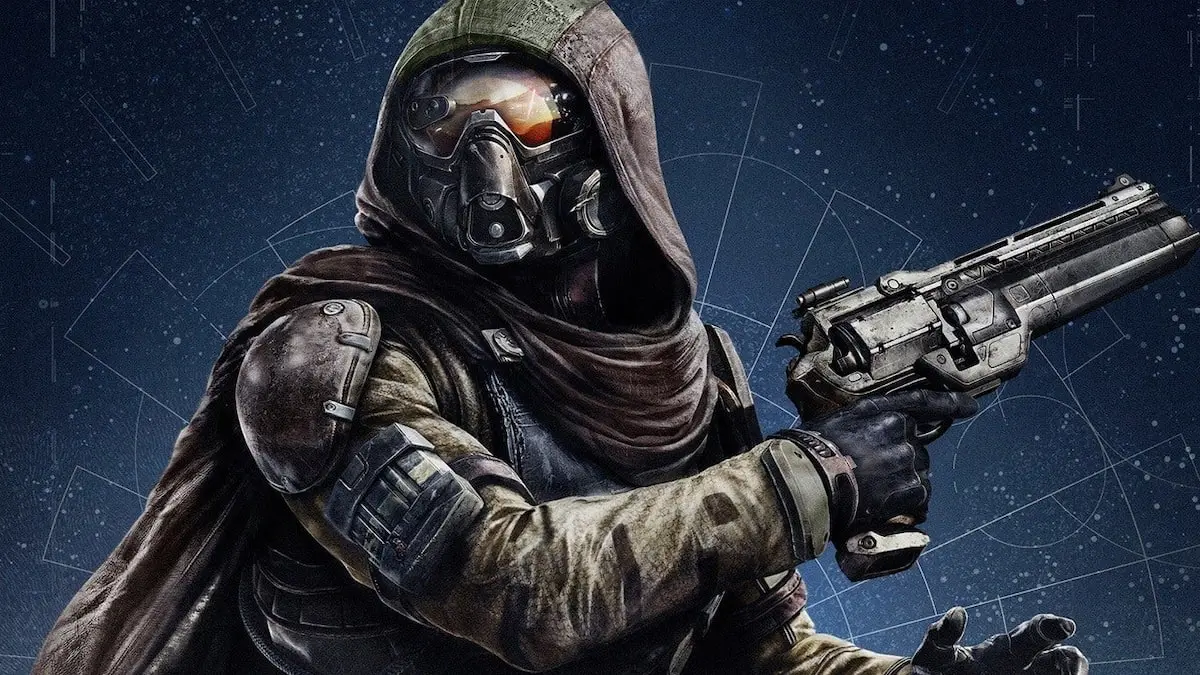It’s hard to imagine now, but the day Shigeru Miyamoto started work at Nintendo he didn’t have a clue what he was going to do, let alone achieve. Yet what the designer – who has had a more profound, towering influence on the evolution of interactive entertainment than any other single figure – did have was a desire. And in Nintendo he found the company to help him fulfil it.
“Before joining Nintendo all I wanted was simply to create something that may surprise the world, but I did not have any concrete idea at all,” he tells Eurogamer. “And once I joined the company I realised I did not have any particular ideas about what I should do to make a product to surprise people around us.”
Miyamoto is unarguably a genius in his field; but genius alone is no guarantee of greatness. In every tale of distinction there must also be a large dollop of plain good luck. Miyamoto’s fortune was to begin making videogames at exactly the right moment, with exactly the right company.
“I think it was lucky for me to live in the days when Space Invaders was starting to boom,” he reveals. “I still recall that when Space Invaders became a phenomenon in the marketplace I thought this might present me with some potential for a future career.
“And then later on when I was given the opportunity to work on the first arcade game called Donkey Kong, I thought: ‘maybe this is going to create the first step forward to establish my career’.”
Video: Highlights from Eurogamer’s interview with Shigeru Miyamoto.
Miyamoto, who understands my questions in English, but answers in Japanese, translated by veteran Nintendo communications supremo Yasuhiro Minagawa, shares these early memories in a suite high up in London’s Park Lane Hilton, overlooking Hyde Park.
In around 20 hours, many floors below, he’ll receive the Academy Fellowship from BAFTA as the climax to this year’s Video Games Awards, adding the creator of Mario and The Legend of Zelda to an illustrious list of master entertainers that includes Spielberg and Hitchcock.
“Fundamentally I feel a little bit humbled and embarrassed because I cannot make any videogame alone,” he says of the honour. “So if I am going to receive any of this type of personal award I feel embarrassed.”
If Space Invaders created the opportunity which ultimately led to this moment, then the culture of Nintendo enabled Miyamoto to seize, understand and exploit it.
Born on 16th November 1952 in Sonebe, Japan, after graduating from college Shigeru Miyamoto was hired as a staff artist by Hiroshi Yamauchi, then Nintendo president, in 1977. Before he came to sketch out the idea for the game that would become Donkey Kong, Miyamoto immersed himself in the study of the anatomy of game design, fastidiously analysing the success of popular arcade games.
And of all the lessons he learned in those early years, it is perhaps a conversation with the late Gunpei Yokoi, Game Boy designer and original Metroid producer, that made the deepest impression on the mind of the young designer.
“In essence what he told me – and I can vividly remember it – was: ‘You have thought about that too much, you have worried about that too much. Why don’t you stop – you cannot make any further steps as you are right now’.”
And then Yokoi gave Miyamoto an example of what he meant. He told him to imagine someone sitting in a chair and asked to open their hands every time a light was switched on. Simple. And stand up when they heard a sound. Again, simple. But what if they were asked to do both simultaneously? It’s a curious, cute anecdote, but one that gets to the very core of the Miyamoto approach.
In other words, in his eagerness to learn he had been over-complicating, over-thinking the design process. What he learned from Yokoi was: “People can do something very simple, but simple things piled up: that’s where new play can be born.
“My view of making videogames is to make the environment whereby people can try out many things and become creative. In other words, I try to let the players understand something very simple as the basic background and then I challenge them so they will like to challenge many different things to become creative.” Exhibit A: Mario’s jump. From this basic, essential element, all else flows.
When Donkey Kong arrived in 1981 it was notable not just for the game experience. Unusually – and critically – for the time, it was created not by an engineer but an artist. Now responsible for the company’s entire creative output, the great artist has his own words of wisdom for Nintendo’s new generation of wet-behind-the-ears wannabes.
“When a young planner approaches me with a game idea, I’m rather a tough guy!” he says with a chuckle. “And I most often reject it – or turn it back to them. A good idea is something that does not solve just one single problem, but rather can solve multiple problems at once. It’s easy for people to come up with a good idea that can focus on one problem, but that’s not good enough.
“So forever I’m sending back new ideas from the planners, and I say: ‘This time I can’t use your idea but please keep it in your mind and work on new ideas again and again and then you’ll be able to find out some new, good ideas that can solve many other issues at one time.’ Then that’s the idea that we can use.”
Miyamoto has been forced in recent years to delegate more and more of the design process to his team. “It’s actually humanly impossible for me to take care of all the projects I have to do and the fact is I really love assigning some stuff to other people,” he says. “But of course I make it a rule that I have to see everything in the final stages of development.”
That may be true in general, but Miyamoto, still fizzing with enthusiasm, inspiration and joie de vivre, cherry-picks certain pet projects to which he devotes himself, despite the demands on his time.
“My working hours are dividing into two periods: daytime and nighttime,” he explains. “I mostly spend my daytimes meeting with people, or sometimes people grab me for a quick appointment without any prior notice! It’s only during the nighttimes that I am able to concentrate on some of the specific works.”
That said, I’m told these days Miyamoto tries to keep his weekends free to pursue other hobbies and interests. And his approach here reveals that there exists, beneath the childlike, effervescent exterior, an indefatigable determination to succeed.
“I’m very eager to practice whenever I have an interest in anything,” he admits. “Quite recently I’ve come to notice it’s not just that I like to practice anything, I just don’t want to be defeated by anyone in any particular field, that’s all.”
With his game ideas inspired by all areas of his life, it’s now company policy for him not to reveal his hobbies, for fear of letting slip details of future projects by implication. During his brief stay in London, he takes afternoon tea with Nintendo UK, watches the Lion King musical in the West End, and has plans to visit Tate Modern and the Design Museum.
“Next year, maybe or maybe not, my own experiences of coming to London and being interviewed in front of a camera might be reflected in a game we will be selling – who knows!” he quips.
“Sometimes I say that my hobby has been translated into specific games, but it’s not such an occurrence all the time. Something subtle I’ve been doing might be incorporated into my way of doing videogames in one way or the other in the end. Only after I have completed a project have I noticed, ‘Okay, that bit was based on my own experience.’ All I can tell you about my personal life [now] is we started owning a cat,” he adds, erupting into laughter.
Of those projects he has taken a greater direct role in of late, New Super Mario Bros. Wii, understandably, is one. Another, due this spring, is Super Mario Galaxy 2.
Before my first audience with Miyamoto (I interview him on three separate occasions during his visit), I play through the demo of Galaxy 2. It’s brilliant. Of course it is. But – a Gordon Ramsay kitchen of cursing later – I discover it’s also tough. On the way to our meeting I share a lift with Minegawa, who asks: “Don’t you think it’s too difficult?” laying bare a nervousness within a company which has focused so hard in recent years on attracting new audiences with inclusive experiences.
Speaking to its creator, I’m convinced Galaxy 2 is in part a deliberate offering to Nintendo’s core fans, particularly those who feel part of a jilted generation, cast aside for the Wii wrinklies and DS tweens.
“For novice players it might feel that it’s a little bit challenging in the first level,” Miyamoto acknowledges. “They might find the difficulty level somewhat higher than they expect. For people who already completed Mario Galaxy 1 I think it’s going to be a quite challenging game experience.
“Having said that, we’ve been putting so much energy into controlling Mario in 3D world and we’ve been trying to make it as easy as possible, so I hope as many people as possible will try it. Even though it may be quite challenging [for novices], as long as they can get to grips with it it’ll be a very enjoyable game and that might pave the way for them to appreciate the future 3D games as well.”
Structure, here, is everything. And Super Mario World, which saw its Japanese release in 1990, is Miyamoto’s greatest architectural triumph. The world map is crafted with unprecedented elegance and subtlety. Within it lies a game which reveals its secrets only to the creative and committed, first through secret exits and Switch Palaces, then the tantalising twinkle of Star Road and onto, ultimately, the punishing extremes of Special Zone with its climactic multi-screen love-letter to gamers, spelled out in coins: “YOU ARE SUPER PLAYER”. And once the 96 th and final exit is discovered, the world itself transforms. It remains his masterpiece.
“Whether it’s Super Mario World, Super Mario Galaxy or New Super Mario Bros. Wii, our challenge appears to be always the same,” Miyamoto says. “We always have veteran players who’ve conquered all previous Mario games and also we have the newcomers who might not have played any videogames before.
“We have to provide those two types of player with satisfactory entertainment – how we do that is really challenging. That was the particular challenge with New Super Mario Bros. Wii: how we needed to find tweaks to solve the issue for it to become everyone’s game. For Super Mario Galaxy 2 we’ve been trying to incorporate various tweaks including how veteran players can try to collect any and all the stars in the total map.
“So since working on Super Mario World nothing drastic has changed – the map of Super Mario World was made with these two different types of players in mind.”
The challenge of Super Mario Galaxy 2 cannot, however, distract from the asteroid-like impact of Wii and DS on the culture, experience and reach of gaming.
“For the past five or six years it has been one of Nintendo’s challenges that we would like to persuade the public to understand that videogames are actually a very convenient and useful means to use in their daily lives. And I think our endeavours have borne some fruits so far,” he notes with staggering understatement.
“We’re hopeful we can expand that kind of endeavour so that in the future we’ll be able to see a situation where the general public are going to take for granted using videogames technology one way or another.”
DS, as Miyamoto has noted before, even got his wife into games for the first time. It turns out she’s still hooked. “She’s continuing her practice of playing a lot more games lately,” he beams. “Her most recent favourite is the Professor Layton series. Quite recently when she lost the DS card she was really, really upset. That’s a good sign!”
It’s unclear whether Mrs Mario’s gaming flirtations extend to Wii but, as Move and Natal demonstrate, Sony and Microsoft are certainly jealous admirers.
“We feel it’s an honour that some form of entertainment style we created is now going to be taken for granted thanks to the attitude taken by the other companies,” Miyamoto says. “On the other hand, Nintendo is a company that is always striving to create something unique and unprecedented. And if we can do that, if we can establish to the world that videogames have such huge potential for daily life, the existence of games will be even more highly appreciated by the public.”
This, the father of gaming feels, is his “responsibility”. “The fact is many people are afraid or scared of gaming technology,” he says. “Actually it’s very convenient, useful technology and as long as you can have some time to get accustomed there’s nothing to be afraid of at all.
“So my responsibility here must be to try to let people understand how convenient and useful game technology is and try to remove hurdles so that even your grandpa and grandma are waiting to turn on the power switch of your console easily without hesitation.”
The following evening, the BAFTA ceremony offers up the uniquely surreal sight of a tuxedo-clad Miyamoto, in black tie with Mario-red hanky sprouting from his breast pocket, eating dinner with Ant and Dec.
When the Mario and Luigi of light entertainment present him with his Academy Fellowship, preceded by awestruck video tributes from previous recipients Will Wright and Nolan Bushnell, the standing ovation that greets Miyamoto’s walk onto stage visibly moves the designer, as he almost chokes while delivering a speech in English filled with humility and gratitude. Misty eyes all round, it’s a lump-in-throat moment for anyone who’s loved his works. Which must be a clear majority of the room.
I’ve been listening to his speech directly behind the stage, waiting with a film crew to get his first reaction on receiving the Fellowship. A little overwhelmed by the rapturous cheers, he asks for a glass of water and gathers himself.
“I was rather nervous but I’m really, really glad and honoured everyone was listening to me with that kind of special attachment,” he says. “More important than that I was really grateful for being able tonight to observe the great games by younger people.
“Very frankly speaking, I have to admit videogames still have some way to go in order to reach the level of movies when it comes to social acceptance by the general public. That reminds me I’m really grateful to receive this kind of award, and at the same time reminds me we still have to carry on making a great effort.”
I ask him what advice he would give to aspiring game makers. “If I can give any advice: be yourself. Try to be different from the others, regardless of whatever’s hot or selling well in the marketplace. Try to find something really unique to you. Even though you’ll be one of many developers working on a project, one individual’s idea is going to stand out somehow and that’s something that will appeal to game fans.”
As we wrap up our final interview and he walks off with other Nintendo staff to savour the moment, it occurs to me the emotional Miyamoto I’ve just seen wasn’t simply struck by the occasion. It was something he’d said to me earlier, about his philosophy of games design.
“The way I make games is I really want people to feel sympathy with me. I really want to create emotional attachment that I myself have towards the games I’m making. As long as emotional feelings are involved I really don’t need any particular language – there is no language barrier at all. In other words, I really want people to have the same emotional experience of happiness.”
Tonight, on stage surrounded by his peers, he saw exactly how much they felt it.



